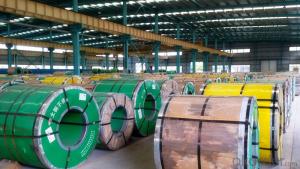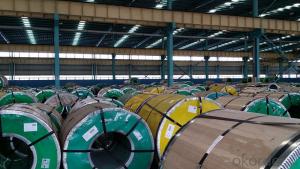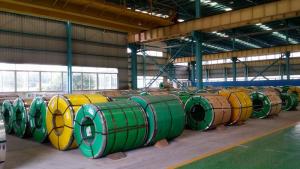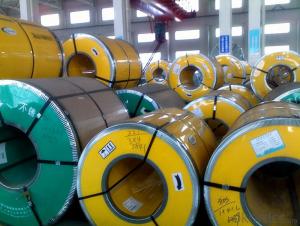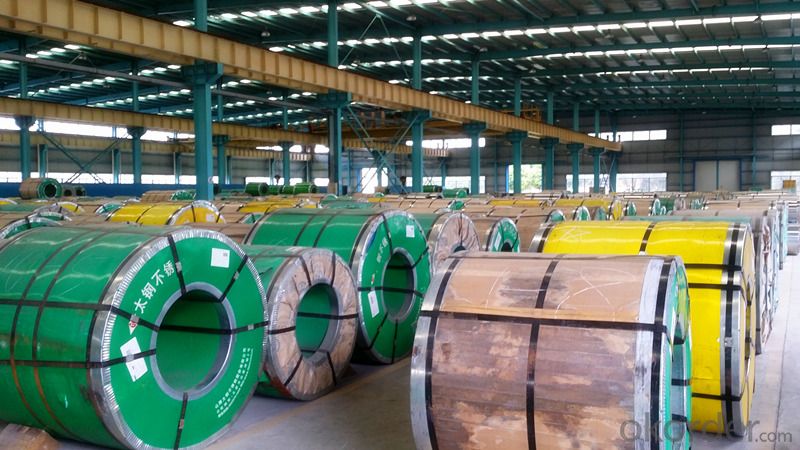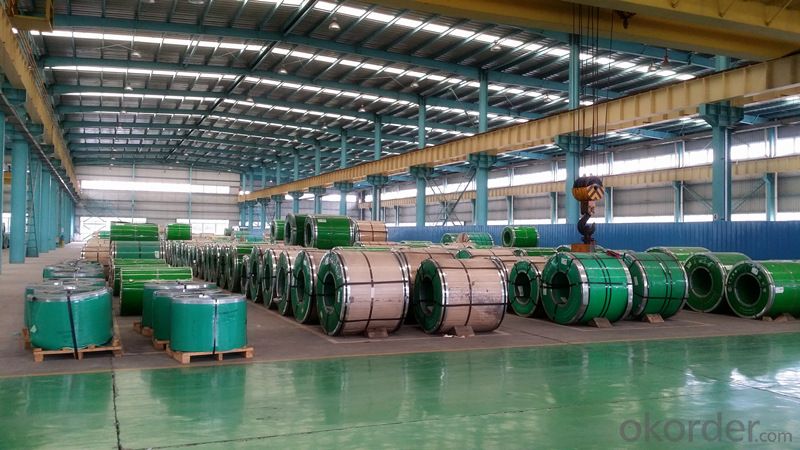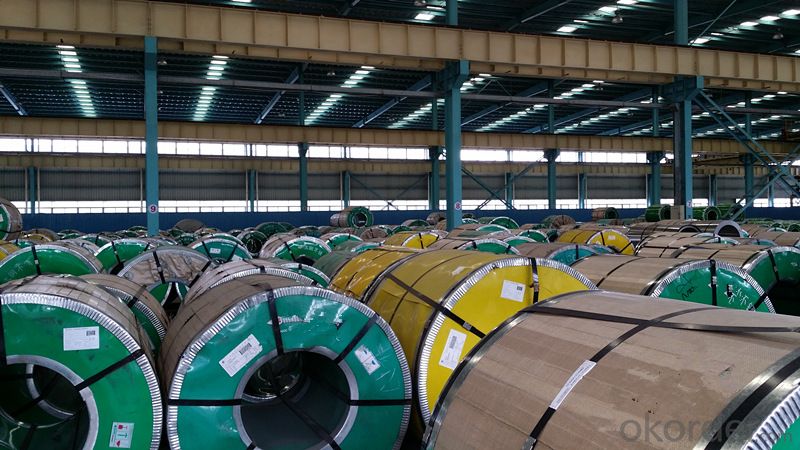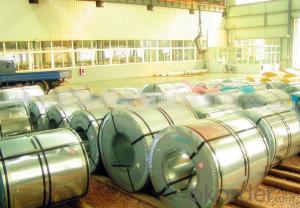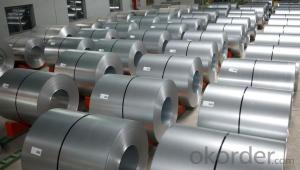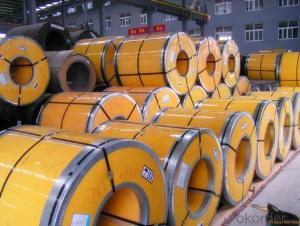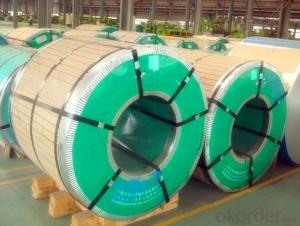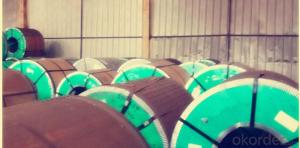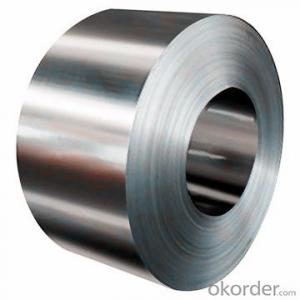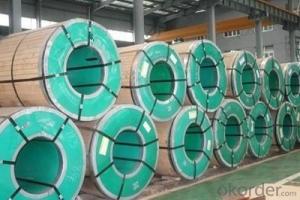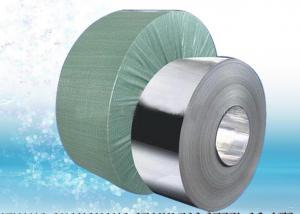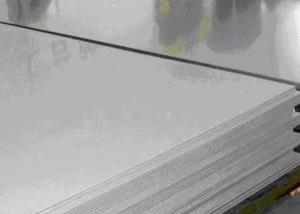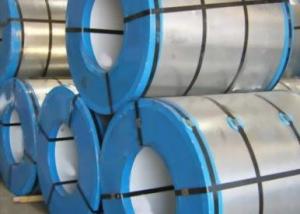Hot Rolled Stainless Steel Coil 304 Grade No.1
- Loading Port:
- China Main Port
- Payment Terms:
- TT OR LC
- Min Order Qty:
- -
- Supply Capability:
- -
OKorder Service Pledge
OKorder Financial Service
You Might Also Like
Type | Hot Rolled Stainless Steel Coil 304 |
Thickness | 3.0mm-4.0mm |
Width | 550mm, 650mm, 1000mm, 1219mm, 1240mm, 1500mm |
Length | according to weight |
Brand name | CNBM |
Standard | ASTM, AISI, DIN, GB, JIS etc |
Material | 304 |
Application | Foodstuff, Gas, metallurgy, biology, electron, chemical, petroleum, boiler, nuclear energy, Medical equipment, fertilizer etc |
Package | Standard export sea-worthy packing |
Delivery time | Within 15 days since getting the deposit or LC origin |
Surface | NO.1 |
Productivity | 20000 tons/month |
Specifications
1.surface:NO.1
2.standard:JIS, AISI, GB
3.width: 0.55m, 0.65m, 1.0m, 1.22m, 1.5m, 2m or requirement
Chemical composition:
(%):C=0.07, Mn=2.00, P=0.045, S=0.030, Si=0.075, Cr=17.5-19.5, Ni=8.0-10.5, N=0.10
Physical Properties
Tensile strength σb (MPa) ≥ 520
the conditions yield strength σ0.2 (MPa) ≥ 205,
elongation δ5 (%) ≥ 40
Reduction of ψ (%) ≥ 50,
hardness: ≤ 187
HB; ≤ 90
HRB; ≤ 200H
- Q: What is the price range of stainless steel strips?
- The price range of stainless steel strips can vary depending on various factors such as the grade of stainless steel, the thickness and width of the strips, and the quantity being purchased. Generally, the price range for stainless steel strips can start from around $1 per pound and go up to $10 or more per pound. However, it is important to note that these prices are approximate and can change based on market conditions and supplier pricing. It is recommended to contact stainless steel suppliers or manufacturers to get accurate and up-to-date pricing information for specific requirements.
- Q: How do you prevent corrosion fatigue of stainless steel strips?
- To prevent corrosion fatigue of stainless steel strips, there are several measures that can be taken: 1. Proper material selection: Choose a stainless steel grade that is resistant to corrosion and fatigue. Grades such as 316 and 304L are commonly used for their excellent corrosion resistance properties. 2. Surface treatment: Apply a protective coating or passivation treatment to the stainless steel strips. This will enhance the corrosion resistance and prevent the initiation of fatigue cracks. 3. Regular cleaning and maintenance: Keep the stainless steel strips clean and free from contaminants that can accelerate corrosion. Regularly inspect the strips for any signs of corrosion or fatigue and address them promptly. 4. Avoid harsh environments: Limit exposure of the stainless steel strips to corrosive environments such as saltwater, acidic solutions, or high humidity conditions. If exposure is necessary, consider implementing additional protective measures like applying a barrier coating or using cathodic protection. 5. Proper handling and storage: Handle the stainless steel strips with care to prevent any damage that could lead to corrosion or fatigue cracks. Store them in a dry and controlled environment to avoid exposure to moisture or other corrosive agents. 6. Design considerations: Ensure that the design of the stainless steel strips takes into account factors such as stress concentration, surface finish, and proper installation techniques. These considerations can help minimize the risk of fatigue and corrosion. 7. Regular inspections and testing: Implement a regular inspection and testing program to detect any early signs of corrosion fatigue. This can include visual inspections, non-destructive testing methods, and monitoring of environmental conditions. By implementing these preventive measures, the risk of corrosion fatigue in stainless steel strips can be significantly reduced, ensuring their long-term durability and performance.
- Q: Can stainless steel strips be used in chemical pumps?
- Yes, stainless steel strips can be used in chemical pumps. Stainless steel is highly resistant to corrosion and can withstand a wide range of chemicals, making it a suitable material for use in chemical pumps.
- Q: How are stainless steel strips used in construction?
- Stainless steel strips are commonly used in construction for various purposes such as framing, structural support, and finishing touches. They are often utilized as reinforcement in concrete structures, providing additional strength and durability. Stainless steel strips are also employed in the fabrication of building components like beams, columns, and lintels due to their resistance to corrosion and high strength-to-weight ratio. Additionally, these strips are utilized for cladding and decorative purposes, adding a sleek and modern aesthetic to architectural designs.
- Q: Stainless steel strap easy to scrape, how to deal with?
- All the scratches on the watch, watch case and watch band can be removed by this method if you want to remove it or make a look at the appearance of the watch. The lines of straight lines are easier to handle. If the lines are concentric, that should be done with electrical machines.
- Q: Are stainless steel strips suitable for heat exchanger tubes?
- Yes, stainless steel strips are suitable for heat exchanger tubes. Stainless steel is known for its excellent corrosion resistance and high strength, making it an ideal material for heat exchanger applications. Additionally, stainless steel strips can be easily formed into tubes, ensuring efficient heat transfer and durability in various operating conditions.
- Q: How do stainless steel strips resist staining?
- Stainless steel strips resist staining due to the presence of chromium in their composition. The chromium forms a protective layer on the surface of the steel, known as chromium oxide, which acts as a barrier against corrosion and stains. This layer prevents the steel from reacting with oxygen, moisture, and other corrosive substances, ensuring a long-lasting and stain-resistant quality.
- Q: Are stainless steel strips available in different finishes?
- Yes, stainless steel strips are available in different finishes. Stainless steel is a versatile material that can be finished in various ways to achieve different appearances and properties. Some common finishes for stainless steel strips include brushed, polished, satin, mirror, and matte finishes. These finishes can vary in terms of texture, shine, and reflectivity, allowing for a wide range of aesthetic options. Additionally, different finishes can also affect the corrosion resistance, durability, and cleanability of stainless steel strips, making them suitable for various applications and environments.
- Q: Can stainless steel strips be used in the chemical manufacturing industry?
- Yes, stainless steel strips can be used in the chemical manufacturing industry. Stainless steel is highly corrosion resistant, making it suitable for handling various chemicals and corrosive substances. It also offers excellent strength and durability, ensuring a long service life in harsh chemical environments. Additionally, stainless steel can withstand high temperatures, making it ideal for use in chemical manufacturing processes that involve heat.
- Q: Can stainless steel strips be used in textile machinery?
- Indeed, textile machinery can utilize stainless steel strips. Stainless steel, a highly flexible material, boasts remarkable resistance against corrosion, significant strength, and outstanding durability. These attributes render it suitable for a myriad of purposes in the textile sector, encompassing textile machinery. Weaving machines, spinning machines, knitting machines, and other machinery components that necessitate robustness and resilience against deterioration can all accommodate stainless steel strips. Moreover, stainless steel strips are effortlessly cleaned and maintained, thereby serving as an impeccable choice for textile machinery that encounters fibers, dyes, and various chemicals.
Send your message to us
Hot Rolled Stainless Steel Coil 304 Grade No.1
- Loading Port:
- China Main Port
- Payment Terms:
- TT OR LC
- Min Order Qty:
- -
- Supply Capability:
- -
OKorder Service Pledge
OKorder Financial Service
Similar products
Hot products
Hot Searches
Related keywords
